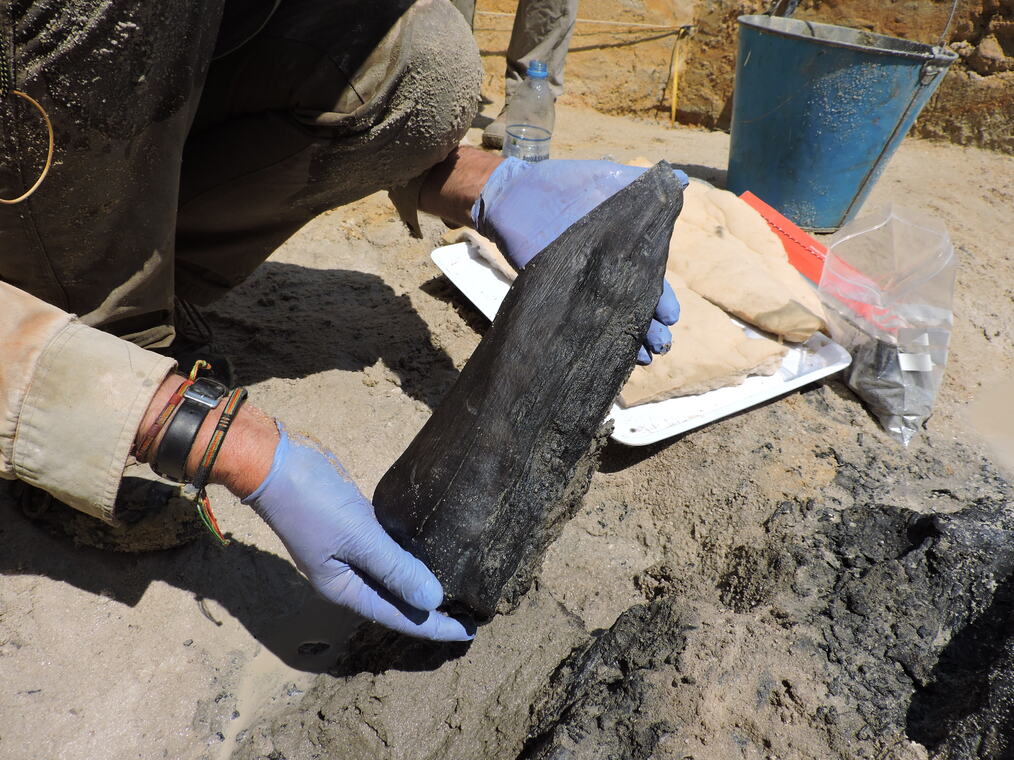Deep Roots of Humanity
Welcome to the Deep Roots of Humanity project, an investigation of early technological change in south-central Africa.
We are an international and interdisciplinary team of researchers examining a fundamental change in the way early humans planned and made tools. The time period spans 500,000 years to 300,000 years ago (the Early to Middle Stone Age transition). During this period a new way of creating tools emerged which we rely on today for making most everything we use.
For the first time in human history tools were made by combining two or more parts to make a single tool. Sounds simple but it was a revolutionary idea: everyday actions such as cutting, scraping, chopping, drilling and piercing were made more efficient with the addition of a handle. Imagine using a screwdriver which didn’t have a handle or try chopping down a tree with an axe blade, but with no handle. You’ll soon appreciate the advantages of hafting (the process of combining parts into a functioning whole).
The Deep Roots team is working to determine when this invention took place in what is now Zambia and put the Zambian evidence in the broader context of the Early to Middle Stone Age transition in Africa. We are also interested in why the invention of hafting came about when it did. Did climate change play a role, and were there regional differences in the take-up of this technology? Afterall, the large hand-held tools of the Early Stone Age, such as handaxes and cleavers, had been the standard tools for well over a million years. Why change what does the job? These are some of the basic questions driving our research.
We are documenting our research in more detail on the Deep Roots project website.
Excavating the evidence
Our five year programme of excavation and research aimed to enrich the database of evidence from existing African archaeological records, expand its geographical coverage and serve as a model which future researchers can adapt to locations in other parts of Africa.
Between 2017 and 2022 an interdisciplinary team worked in Zambia excavating in three key locations:
- Victoria Falls
- Kalambo Falls
Previous excavations have found evidence in these places for the Early to Middle Stone Age transition (Mode 2/Mode3). This transition pre-dates the evolution of Homo sapiens and is characterised by a radical change in the way tools were imagined and made, with multiple parts combined into a whole. This is known as hafting or combinatorial technology.
Everything we make today is produced using tools made using other tools made of multiple parts. This research aims to unravel when and why this fundamentally new way of thinking about technology occurred. Part of understanding this transformation is learning what advantages this technology offered over older ways of making tools.
 Well preserved wood being recovered from Early Stone Age deposits at Kalambo Falls, Zambia.
Well preserved wood being recovered from Early Stone Age deposits at Kalambo Falls, Zambia.
During our excavations at Kalambo Falls, we discovered the earliest evidence for a wood structure. This was found in waterlogged deposits dated to nearly 500,000 years ago, see our publication in the journal Nature: Barham et al. 2023. ‘Evidence for the earliest structural use of wood at least 476,000 years ago’.
The structure pre-dates the evolution of Homo sapiens which raises the question of who was the maker? We think it was Homo heidelbergensis (also known as Homo bodoensis) which lived in Africa between 700,000 and 300,000 years ago. Until now, we had no idea that this species was capable of making such a large and carefully planned object, which involved shaping tree trunks with stone tools. The structure also represents the earliest evidence of a combinatorial technology (above).
Our team
Our international team of researchers includes:
- Archaeologists - expert in innovative approaches to the study of stone tool use, notably use-wear and residue analysis
- Geographers - to help us understand the formation of the sites
- Geoscientists - who can date the deposits.
Find out more about us:
- Larry Barham (Liverpool, UK),
- Ian Candy (Royal Holloway, University of London, UK)
- Geoff Duller (Aberystwyth, UK)
- Andy Hein (Edinburgh, UK)
- Maggie Katongo (Livingstone Museum, Zambia)
- Karl Lee (professional technologist, UK)
- Perrice Nkombwe (Moto Moto Museum, Zambia)
- Veerle Rots (Liège, Belgium)
- Noora Taipale (TraceoLab, University of Liege),
- Dave Thomas (Oxford, UK)
- Sumiko Tsukamoto (Hannover, Germany).
The Deep Roots of Humanity project is funded by the Art & Humanities Research Council, UK (grant AH/N08804/1).